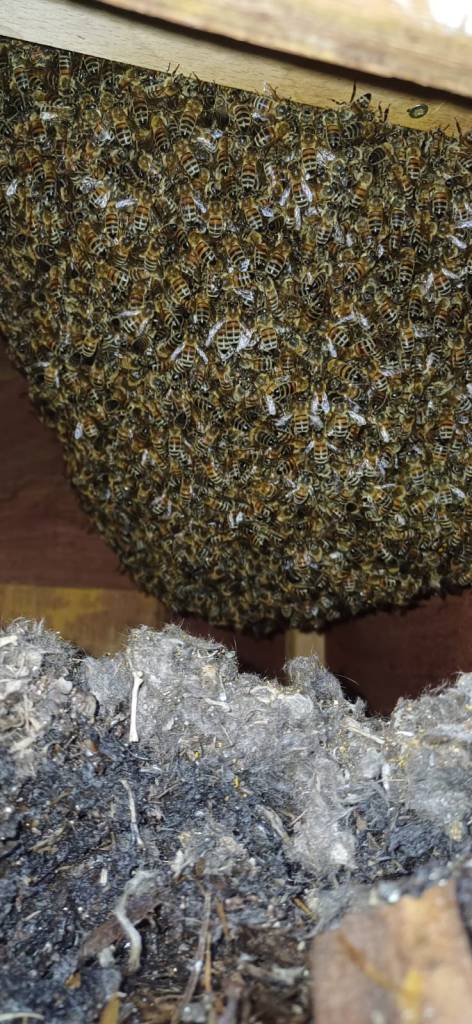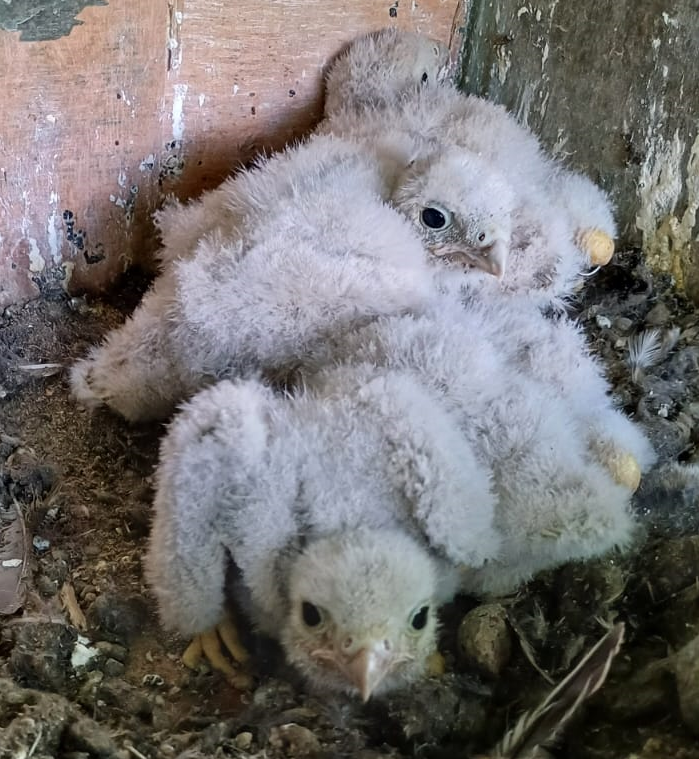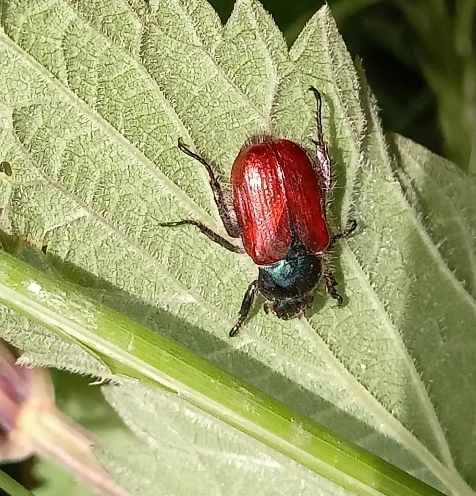As some of you will know, when the icon that is Nigel Lewis retired from bird ringing he left four C-permit holders without a trainer. Like Nigel, they were all part of the Salisbury Plain Ringing Group (SPRG). Since Nigel stepped back the group has been steered by Dick Clayton, and they have an organised working regime. However, Dick is not a trainer, so he could not take responsibility for their licences: a C-permit is still a training permit. As I am a trainer, and they would not be any sort of burden, I offered to become their nominated trainer. As their trainer, I needed to meet up and see how they work. They only have to see me once a year and it seemed sensible to get to see them early on. I have already had the pleasure of working with Justine as, prior to Nigel’s retirement, she had already started working with me to expand her ringing skills to include Passerines and near Passerines.
Today I was invited by Dick to join him and Jon Pepper checking Barn Owl and Kestrel boxes on Salisbury Plain. We arranged to meet at West Down Camp at 8:15. I thought I would aim for 8:00, to give a bit of leeway. Last time I went through Devizes there were horrendous roadworks, so I gave myself an extra 20 minutes to get there. So I arrived in Tilshead, just down the road, at 7:30. Time for a large Costa Americano!
I booked in at the camp with the two very friendly ladies manning the entrance barrier, chatted about what we were going to be doing and showed them some photos from previous sessions. Dick arrived and I followed him on to the site. We parked up, Jon arrived and booked in with Range Control, and we set off in the SPRG 4-wheel drive. Virtually the whole time was spent on military land.
We worked through until 16:00 and ringed 15 Kestrel chicks from 4 broods and 9 Barn Owl chicks from 3 broods. Two adult Barn Owls were caught at different boxes: one retrap and one to be ringed. Jon was a trooper: doing all of the driving, ladder carrying, chick handling and nest box cleaning. He is also responsible for all of the photos of live birds and the bees. Mine are the birds as food, the orchids and the beetle.
Not everything was rosy, particularly for the Barn Owls. The first unfortunate finding was particularly sad:

Normally I would love to find a wild bee’s nest. Unfortunately, this bee’s nest inside the owl box had tragic results. We found three dead, emaciated chicks in the nest. There was food there, but too big for the chicks at that age. They need the adults to rip up the voles and feed them directly. Unfortunately, the bees had built their nest across the access to the nesting area: preventing the adults from getting to their young, so they starved to death.
In another box we found that Jackdaws had built their nest on top of the Barn Owl nest. The Barn Owl nest contained three cold eggs. Those eggs had embryos at an early stage of development. This is something that happens reasonably regularly, particularly with Tawny Owls. Fortunately, despite finding plenty of Jackdaws in my nest boxes, I haven’t found this issue in my north Wiltshire boxes. It is possible that this is because our Barn Owls start breeding later than further south in the county. Certainly that was the impression I got when I did the session in the Wylye valley and some of my northern boxes in the same week.
The final, third, sad finding was in a somewhat unusual box structure: a Kestrel box, next door to a Barn Owl box, on the same platform. We caught the adult female in one of the boxes, the other was empty, but on the floor under the box were the feather remains of a reasonably well advanced Barn Owl chick. There were no bones or other remains, but wing feathers at the two-thirds grown stage and some fully adult body feathers.
I don’t want to give the impression that it was all doom and gloom: it was a really enjoyable and productive day, as the following images will show. It starts with Kestrels:

Recently-hatched chicks – too small to ring

Chicks ready for ringing

Developing well

Ringed and ready to fledge.
Barn Owls:

Recently hatched: too small to ring. With Barn Owls the legs and feet grow slowly, so they are usually ringed when at a larger, more advanced stage than in the Kestrels.

Growing well, ready for ringing

A few more weeks before fledging. The wings are one-third grown. If you look at the underwing coverts you can see several black spots. This indicates that this bird is a female.
Now, the traditional picture of Barn Owls is them hunting over open fields looking for small rodents. However, that is not always the case. The biggest chicks that we found seemed to have had a rather different diet:

When Jon cleaned the box out the extent of the predation on Starlings was quite astonishing. I do know that they do predate on Starlings: I found a pair of wings in one of my boxes at Upper Waterhay Farm, but it was how many the parents must have caught. Clearly they found a decent local Starling roost.
Whilst driving around I was delighted with how much other birdlife is being supported on the Plain. Buzzards and Red Kites were plentiful but the totality of “little brown jobs” was amazing: Linnets and Skylarks, Whitethroats and Corn Buntings – absolutely delightful.
The Plain is alive with insects including this beautifully marked Garden Chafer:

Garden Chafer, Phyllopertha horticola
There were some fabulous flowers out at the moment: plenty of Meadow Cranesbill, Buttercups galore, Cow Parsley reaching to heights of over 2.5m, Vipers Bugloss reaching 1m tall, and then these orchids:

I am no expert but I think that the majority are Fragrant Orchid, Gymnadenia conopsis, and the solitary small, compact flower, Pyramidal Orchid, Anacamptis pyramidalis. I am happy to be corrected.
After what was a busy and fulfilling day, and I am mightily impressed with my new trainee, we arrived back at West Down camp at just after 16:00 and headed for home. I will be out on Monday to ring some of the Barn Owls in my local area.